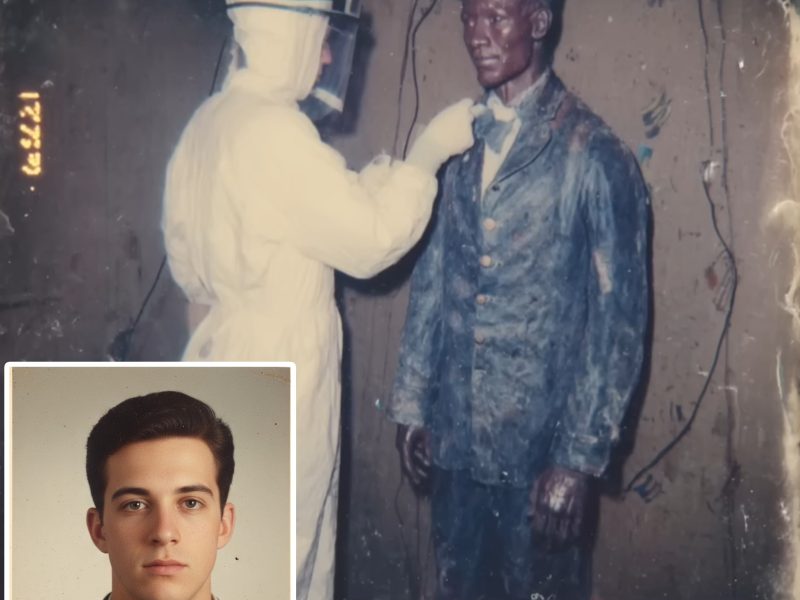A Historical Mystery: When Childhood Embraced Wheeled Adventure
Many people who grew up in the 1950s to 1970s associate childhood with sunshine, scraped knees, laughter that reverberates through the calm streets of the suburbs, and a peculiar metallic device hidden in garages or toy chests.
A small, odd key hanging on a thread and two pieces of cold metal with leather straps gave the impression that it was a carpenter’s tool rather than a toy.
This strange device was a symbol of freedom, camaraderie, and the excitement of movement for a child in that era. Before sneakers became iconic sportswear, before video games dominated weekends, and before playgrounds were cushioned for safety, it was the roller skate of a bygone era.
Every tumble served as a lesson in balance, bravery, and tenacity during that era when happiness came with the possibility of falling.
Skating Before the Age of Sneakers: The Origin of a Classic
The sleek, plastic-bodied roller skates of the mid-1900s were not the same as those of today. All of them were metal—sturdy, shiny, and a little scary. Instead of having built-in shoes, these skates linked straight to your existing footwear.
They could be sized to fit your Sunday best, your school shoes, or even the sneakers you used to mow the grass with a few twists of the skate key.
Each skate was constructed with leather straps and steel plates that were intended to snugly fit your shoe bottoms. The wheels, which were constructed of metal, rolled over asphalt, brick, or concrete with a characteristic clatter.
Long before the noises of smartphones or streaming videos filled the air, a child’s ears were filled with the beat of exploration that permeated every click and rattle.
Children could have fun back then without the need for costly devices or specialized equipment. All it took to start whole afternoons of laughter was a pair of skates and a stretch of sidewalk.
The Skate Key’s Magic: A Child’s Freedom Badge
The key was perhaps the most intriguing aspect of these roller skates, not the skates themselves. Every child’s most treasured item was the skate key, which was typically tiny enough to fit in a pocket or worn around the neck with a piece of thread.
There was power in this small metal instrument. It can make the clamps that held your shoes tighter or looser. It might modify the skates to accommodate a friend or smaller sibling.
If you lost it, your skates would have become worthless metal objects. Every child in the neighborhood understood the anxiety of losing their key and the happiness that comes from discovering it again.
While some kids adorned their keys with stickers or colored threads, others retained them as fortunate charms. “Don’t lose that key!” was a common warning from parents, who were well aware that keys were frequently misplaced and exchanged like valuables.
The key represented independence and was more than just a tool. For many, it was the first duty that felt exciting and mature, the first item they learnt to manage independently.
Sidewalk Adventure: The Soundtrack of Childhood
The clatter of metal wheels filled the streets in the 1950s and 1960s. After school, kids would go on skates, race down driveways, or create impromptu roller derbies in parking lots.
The neighborhood’s everyday activity was accompanied by the loud, gritty, and unmistakable sound of those skates. Fathers mowed the lawns around them, mothers watched from porches, and children ran by with their hair flying and laughing following.
Naturally, spills were a part of these escapades. Knee protectors were uncommon, and concrete sidewalks were harsh. The badges of honor were torn jeans, scraped elbows, and bruised shins. Determination followed each fall: get back up, tighten the straps, and try again.
Games that wound over entire blocks, such as relay races, obstacle courses, or “follow the leader” tasks, were created by children.
The excitement was in the movement itself, not in winning. To taste pure freedom was to balance on two metal wheels and have the wind sweep past your face.
Timeless friendships and ties to the neighborhood
Neighborhoods were actual communities in a time before digital connections. Those connections were forged in part by roller skates.
Children helped each other adjust the straps, exchanged skates when someone outgrew theirs, and shared skate keys. Empty parking lots were transformed into improvised rinks, while driveways were transformed into meeting places.
The memories were more deeply etched than any photograph could, even though there were no smartphones to record the moments.
Parents frequently joined in the fun as well. Some might think back to their own skateboarding days, teaching their kids how to balance or tighten the wheels. Others just grinned as the following generation experienced the same happiness they had.
Skating was a rite of passage for many families. It was a combination of joy, community, and independence.
When Happiness Was Found in Simplicity
Those skates serve as a reminder of how easy life used to be. Imagination was the source of entertainment, not screens. To feel connected, kids didn’t require pricey technology or fads. They only needed a piece of pavement and a pair of skates.
Skating evolved into a form of self-expression. It taught emotional as well as physical equilibrium. Resilience was promoted by falling and getting back up, laughing off the hurt, and trying again.
The unstructured aspect of play also has a certain enchantment. Children created their own rules, grew bravery via trial and error, and learnt from their failures. These were not merely games; rather, they were enjoyable lessons in life.
The Transition: Modern Comfort Replaces Metal Wheels
The sport of roller skating changed by the late 1970s and early 1980s. Everything changed with the arrival of polyurethane wheels, improved designs, and new materials.
The skates become much more comfortable, quieter, and smoother. As roller rinks appeared all throughout the nation, skating became a social activity as well as a sport.
But with that change, something was lost. The metal skates’ gritty, unpolished charm gave way to nostalgia. Polished flooring and disco lights replaced the feeling of adventure, the unpredictability of balancing on uneven wheels over fractured sidewalks.
However, no contemporary design could ever quite capture the excitement of their first ride down a rocky road or the satisfaction of tightening their skates with their own key for those who grew up with metal skates.
A Shared Nostalgia That Persists Today, you can easily identify those old skates if you find them at a flea market or hidden away in a grandparent’s attic. The leather straps are fragile and the metal is probably rusted, but the memories they bring back are everlasting.
Although they are valued by collectors as artifacts of Americana, their significance to the people who utilized them is far greater. A whole universe is brought back when you hold a skate key or hear the soft clatter of metal wheels.
This was a period when kids used to play outside until nightfall, when their imaginations ran wild, and when every scrape told a tale.
Many people find the sound of those wheels to be just as nostalgic as the melody of an ice cream truck rolling down the street or the smell of chalk dust in old classrooms. These skates are representations of youthful wonder, simplicity, and community.
Why They Are Still Important Today
The tale of those skates serves as a subtle reminder that happiness doesn’t have to be complicated in a world full of scrolling screens, incessant messages, and digital cacophony. The simplest things frequently create the greatest memories.
Despite their flaws—they were noisy, unwieldy, and occasionally painful—the roller skates of the 1950s taught a generation the importance of independence, self-control, and bravery. They transformed everyday days into adventures and everyday streets into playgrounds.
They also convey a powerful cultural message: comfort and technology may change, but childhood’s core qualities—curiosity, inventiveness, and the excitement of exploration—never go out of style.
Don’t discard those old pairs if you ever come upon them. Hold them in your hands, polish them, or put them on display. Holding a narrative in your hands is more than just touching a toy.
An Icon of a Past Time
A generation that grew up without instant pleasure is represented by these roller skates. They represent a time when playing was about participation more than perfection.
A story of kids racing down the street, parents cheering from porches, and lifelong friendships is hidden behind every rusty screw, ding, and worn-out strap. They serve as a reminder that the greatest memories of childhood must be experienced in person; they cannot be downloaded or streamed.
Therefore, keep in mind that things were more than just toys the next time you hear the faint clatter of wheels on concrete or see an old photo of children with skate keys around their necks. They served as tickets to liberty.
Conclusion: It’s Not Just Leather and Metal
The metal roller skates with their tiny keys, the mystery item from the past, are much more than a discarded toy. They stand for tenacity, simplicity, and interpersonal relationships.
They bring back memories of a time when excitement started just outside your front door, when children played outside until the streetlights came on, and when laughter could be heard throughout the entire block.
Such delight seems almost enigmatic in the fast-paced world of today. Perhaps that is the lesson these vintage skates still teach us: happiness is something you make with your own two feet, not something you can locate on a screen.


